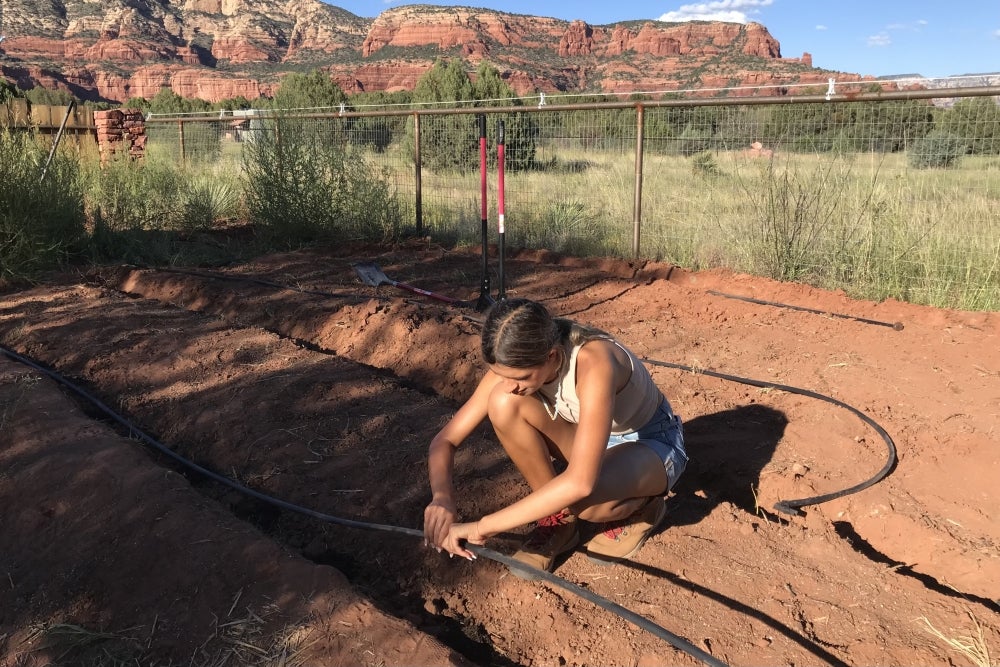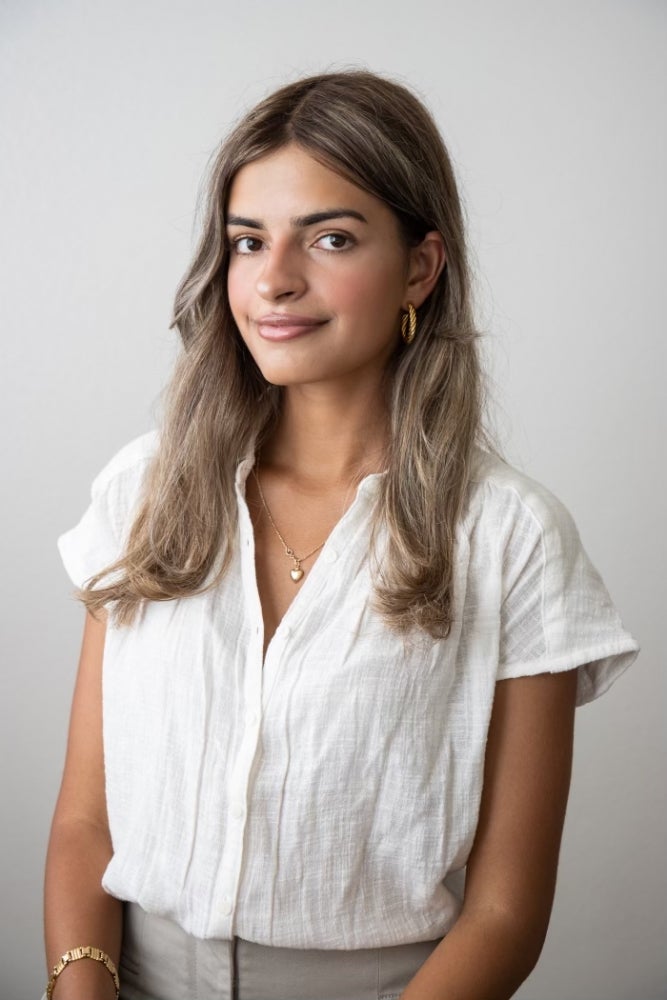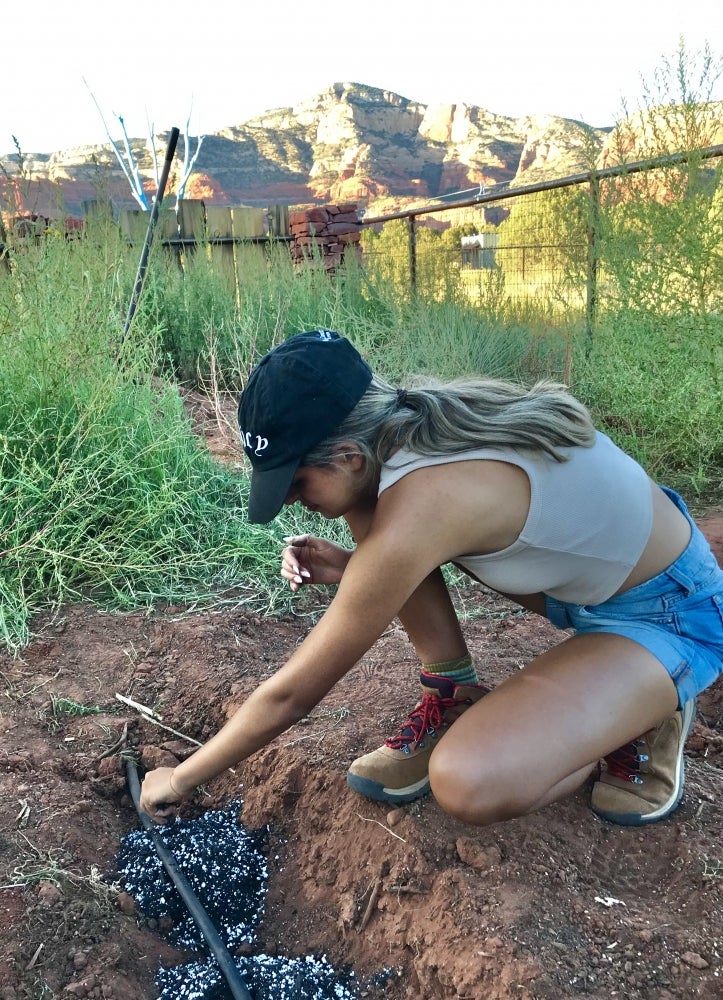
When Every Drop Counts

People need water to drink, but we also need it to grow our food. This simple reality poses a complex dilemma for an increasing number of communities as climate change saps the moisture from some of Earth’s most fertile regions. The situation has mobilized people around the world, from farmers and inventors to scientists and government officials. When it comes to water, everyone is trying to figure out how to use less and lose less.
UC Santa Barbara student Visala Tallavarjula is among those who’ve set their minds to this task. And now the fourth-year environmental studies major has made it to the final round of the 2022 Collegiate Inventors Competition with her innovative solution: Sequestron. The irrigation technique promises to increase food production while slashing water use, all with readily available materials.
As one of five finalists in the contest run by the National Inventors Hall of Fame, she’ll present her idea at the United States Patent and Trademark Office in Alexandria, Virginia, on Oct. 11 and 12. “This is a really exciting opportunity,” she said.
So is her technique, which can be accomplished with off-the-shelf components. “You can do this in your own garden,” Tallavarjula said. Sequestron comprises three innovations in one package. The first is a topsoil layer of perlite-amended soil to reduce evaporation. The second is an infiltration insert that delivers water from drippers four inches below the surface, right to a plant’s roots. Finally comes a layer of soil and charcoal spread in patches below the roots to prevent water from percolating deeper into the ground.
Tests suggest the system increases crop yield while cutting water use in half. The perlite-amended top layer alone reduces water use by 30%. Sequestron even enables farmers to grow crops in sand. “This could actually arrest desertification,” Tallavarjula said.
Tallavarjula’s natural curiosity and desire to implement ideas drove her forward from a young age. “Science has always been a big part of my life,” she said. Raised in Santa Clara, California, she’s the daughter of a Polish mother and an Indian father who both have a deep connection to farming. Her parents supported her curiosity and ambition from an early age. “I’ve participated in science fairs pretty much my whole life,” she added.
The seed of the Sequestron project was planted while Tallavarjula was in junior high school. The family was driving through California’s Central Valley, passing by field after field being irrigated by sprinklers. “You could literally see the water evaporating off the fields because it was hot,” she recalled. Yet time and again they saw billboards and signs cursing the drought and imploring people to conserve water.
With support from her father, a nuclear engineer, Tallavarjula began investigating subsurface drip irrigation. These systems deliver water directly to a plant’s roots. Unfortunately, they are expensive due to the additional hardware, time and labor involved in installation. They’re also more difficult to maintain than a simple sprinkler system.
Even the greatest innovation is useless if no one adopts it. As Tallavarjula noted, “Farmers tend to be distrustful of people coming in and introducing new systems.” Farming is part of their identity. Many of them have been in agriculture for generations and have developed their own methods.
Tallavarjula wanted to work with farmers to develop a system they were likely to adopt. Her solution was to synthesize several promising technologies into a single approach. Sequestron combines practices that are already familiar to many farmers. It’s also modular, so different aspects of the system can be adapted to a farmer’s individual needs.

Sequestron’s charcoal layer keeps water near plants’ roots, and the charcoal’s tiny crevices also provide habitat for beneficial microbes, much like an aquarium filter.
Photo Credit: COURTESY IMAGE
She’s made significant progress. Tallavarjula just returned from setting up a pilot project in Sedona, Arizona. A grant from the Strauss Scholarship Foundation enabled her to implement Sequestron with the Sedona Greenhouse Project, a non-profit using regenerative farming methods to providing fresh produce for the Sedona community.
That trip marked the fourth time Tallavarjula has installed Sequestron. She previously implemented the project in the South Bay at Jacob’s Farm in San Jose and at Full Circle Farm in Sunnyvale. In 2020, thanks to a grant from UC Berkeley’s Big Ideas Competition, she took her project to Centurion University of Technology and Management in Odisha, India.
Tallavarjula has accumulated quite a CV of accomplishments while pursuing Sequestron. In addition to the Strauss Scholarship and Big Ideas Award, she was a regional finalist in Google’s 2016 science fair, won second prize in Amgen’s 2018 Bay Area BioGENEius Competition, and was the Synopsys ‘n+1’ Next Break Through Award winner in 2018. She also was part of the National U.S. Stockholm Junior Water Prize after being chosen as California’s representative three years in a row: 2016, 2017 and 2018.
That said, she’s quick to share credit for her success. “This project is more than just me. It’s my advisor, my dad, my mom, everyone involved,” Tallavarjula said. “No one ever builds anything on their own, and if they say they did then they’re lying.”
Tallavarjula plans to develop Sequestron into a product and start a company. In fact, she’s already applied to a startup accelerator in Northern California. After a lot of thought, she decided against going the non-profit route. “It takes a long time,” she explained, “years and years of work where you’re not getting paid very much, and you’re dependent on the donations of others.” She wanted a more reliable, hybrid way forward to ensure that Sequestron succeeds and can help farmers and their communities.
She envisions the company as a tiered enterprise, where sales revenue supports pro-bono work with small communities in developing and arid regions. Tallavarjula is currently focused on small operations, though she hopes to introduce Sequestron to industrialized farms in the future.
“This project could save lives,” she said. It has the potential to restore soils and create more arable land, increase food production and ensure communities conserve clean, freshwater for drinking.
“Priorities are shifting, but I think it’s just starting to hit people now that they don’t have water,” she continued. “And everything runs on freshwater.”



